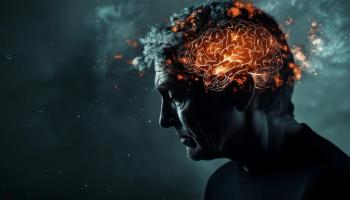
- Psychiatric Times Vol 23 No 4
- Volume 23
- Issue 4
Psychiatric Times
The online contents of the April 2006 issue of Psychiatric Times.
By Richard A. Sherer
While teen drug use continues to decline, it is the baby boomers who are suffering the greatest losses from substance abuse, and whose plight is largely overlooked by policy makers.
By Kenneth J. Bender, PharmD, MA
The FDA advisories warning of increased suicide risk among children and adolescents beginning antidepressant therapy have alarmed the health care community-but it may be a disservice to withhold these medications from those who need them.
By Steven A. King, MD, MS
First described more than 500 years ago, phantom limb pain is a common disorder today. Although it is easy to diagnose, its cause remains unclear, it can be difficult to manage successfully, and health care professionals often do not address it.
By Jay M. Pomerantz, MD
Pilot studies show that preventing PTSD after vulnerable persons are exposed to extreme life-threatening trauma is possible, although we are in the very early stages of knowing exactly what to do.
By Shirly Mahgerefteh, Joseph M. Pierre, MD, and Donna A. Wirshing, MD
While an antipsychotic medication is the first step of treatment for schizophrenia, it is increasingly recognized that comprehensive care requires the integration of adjunctive therapies and attention to long-term treatment goals.
By Jeffrey Junig, MD, PhD
There is no shortage of evidence for the notion that society places a low value on the treatment of mental illness. Have psychiatrists bought into the attitude that mental health is less valuable than physical health?
By Karen Dineen Wagner, MD, PhD
A black box warning about increased suicidality in pediatric patients is now required for all antidepressant medications. This article reviews a number of studies on this topic that were published after the FDA advisory was issued.
By Fred Ovsiew, MD
Psychiatrists specialize in mental phenomena, but this special expertise does not confer license to ignore the additional information that can be gathered from physical signs.
By Alexander Neumeister, MD
As many as 90% of Americans are exposed to at least one traumatic event in the course of their lives. Many more are exposed to more than one traumatic event. Short- and long-term sequelae of traumatic exposure vary greatly and range from complete recovery, to severe and debilitating PTSD.
By Michael A. Fauman, MD, PhD
In the late 18th century, a French surgeon named Pouteau performed 120 successive lithotomies with an extraordinarily low mortality rate. His secret was the use of innovations used widely today. Why weren't his methods more widely adopted by other physicians of his time?
By Dee Rapposelli
Prescriptions for psychotropic drugs for adolescents increased by 250% between 1994 and 2001. Researchers note that this trend coincides with the 6-fold increase in direct-to-consumer drug advertising.
By Michelle Riba, MD, MS
Many of our female patients are more worried about breast cancer than heart disease. Because psychiatrists will almost certainly care for patients who have a history of breast cancer, Dr Riba reviews some of the major issues to consider.
By Gene Usdin, MD
This book is recommended not only for therapists but also for patients in therapy and others seeking enjoyable, fascinating reading and insight into their own marital relationships.
Special Report: Neuropsychiatry
By Robert E. Hales, MD, MBA, and Stuart C. Yudofsky, MD
The 5 papers in this Special Report on neuropsychiatry provide compelling evidence for the renaissance of neuropsychiatry as a clinical discipline. We have every reason to hope that this will lead to a better understanding of the complex interactions between brain and behavior and will reduce the artificial distinction between neurology and psychiatry.
By Nash N. Boutros, MD, and Kerry Coburn, PhD
The recent evolution of neuropsychiatry/behavioral neurology as a subspecialty represents a paradigmatic shift regarding the responsibility of psychiatrists in diagnosing and managing behavioral disorders with concomitant and demonstrable brain pathology such as dementia or head injury. This article defines the clinical usefulness of electroencephalography in evaluating neuropsychiatric disorders.
By Julie Dumas, PhD, Jessica Salerno, and Paul Newhouse, MD
During and after menopause, many women report impairments in cognitive functioning. Should hormones be prescribed in an effort to mitigate cognitive symptoms of menopause?
By Perminder S. Sachdev, MD, PhD
Sleep-associated movement disorders are common in the general population. When patients complain of sleep disturbance, psychiatrists should consider,and question for, features of nocturnal movement disorder.
By Edward Kim, MD, MBA
Each year, more than 2 million individuals in the United States sustain a traumatic brain injury. Increased vigilance for previously undiagnosed or incidental TBIs in general mental health populations may lead to more effective clinical management.
By William E. Reichman, MD and Shailaja Shah, MD
The cost-effectiveness of treatment for Alzheimer disease has been questioned. But until the next generation of therapeutics arrives, cholinesterase inhibitors and memantine will probably remain essential components of therapy for cognition and function.
Articles in this issue
over 19 years ago
Single Payer? Yes, But. . .over 19 years ago
Famous Marriages: What They Can Teach Usover 19 years ago
Drug Abuse Hitting Middle-aged More Than Gen-Xersover 19 years ago
Neuropsychiatry: A Renaissanceover 19 years ago
Good Fathers Poemover 19 years ago
RVUs-Whose Value Is It, Anyway?over 19 years ago
DTC Ads Linked to Rise in Drug ‘Scripts for Teensover 19 years ago
Exploring Phantom Limb Painover 19 years ago
Diffusion of Medical InnovationNewsletter
Receive trusted psychiatric news, expert analysis, and clinical insights — subscribe today to support your practice and your patients.














